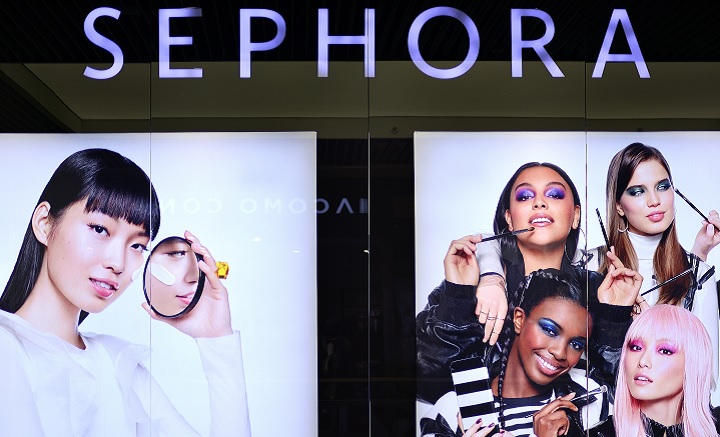Failure to address racial bias and unfair treatment of individuals can ultimately cost retailers a great deal, according to Sephora chief marketing officer Deborah Yeh. “This is a call to the entire retail industry,” said Yeh, who discussed Sephora’s inclusive retail strategy last week at the Commerce Next Marketing Summit Series. “If we can, as an industry, obsess about things like page load time, cart abandonment and search engine optimisation, we surely have enough time and energy
energy to think about an issue that so deeply affects all of our consumers.”
Sephora research has found that three out of five shoppers are unlikely to visit a store again after experiencing unfair treatment, and two out of five are unlikely to visit any outlet of that store moving forward.
According to Yeh, diversity, equity and inclusion have always been priorities for the beauty retailer, so much so that Sephora commissioned a study, The Racial Bias in Retail, in the hope that its efforts to tackle unfair treatment could have an impact on the wider retail community.
The report, conducted by Kelton Global and LRW in partnership with academic partners Dr. Cassi Pittman Claytor, Dr. David Crockett, Whitney Dunlap Fowler and Dr. Patricia Raspberry, looks into why and how racial bias shows up in retail today.
“[The research team] provided to us a concept map about customer journeys … so if the shopping experience is a road, there are some travellers who experience, unfortunately, an extra tax or an extra toll that blocks their way, and it’s going to mean anything from their products being hidden in the ethnic aisle to being underserved or potentially to feeling watched or treated suspiciously,” Yeh explained. “Shoppers of colour would say ‘yeah, we know this has been happening. This is not new news’.”
Yeh said the company’s goal was not only to measure the problem but also to identify tactics that Sephora, and the wider retail industry, can use to create an environment that serves all customers.
“It’s a really rich study, it identified places where we could all work to improve the experience for shoppers of colour,” she said.
Promoting inclusivity through marketing
The study also found that retail shoppers can face exclusionary treatment without even stepping foot in a store.
Three in four retail shoppers, 74 per cent, feel that marketing fails to showcase a diverse range of skin tones, body types and hair textures, which, according to the study, is true across all categories, but especially for department stores (72 per cent), beauty (70 per cent), apparel (69 per cent), and mass merchants (67 per cent).
The lack of diversity in marketing is also seen in the merchandise that lines retailer’s shelves. Two in three retail shoppers (65 per cent) think stores fail to deliver an equally-distributed assortment of products that cater to different shoppers’ tastes and preferences. This is particularly true for mass merchants (63 per cent), hardware (62 per cent), beauty (60 per cent), and outdoor/recreation (60 per cent).
“Within marketing, our actions are to increase representation and promote inclusivity before shoppers even enter our stores,” Yeh said. “It’s all about consumers being able to see themselves reflected in all retailers’ marketing and while we always aim to create inclusive images, we always want to be purposeful about the representation in front of and behind the camera as well.”
Sephora has implemented new marketing guidelines, according to Yeh, to ensure that creative decisions reflect and uplift its communities.
“Like for instance, if we are doing a hair campaign, we want to make sure that we are hiring a hairstylist who feels great styling textured hair. That’s just one example,” she said.
Sephora has also expanded the variety of its content, with videos on how to find sunscreen that doesn’t create a white cast on dark skin, or how to do a smokey eye on an Asian eyelid, for example.
“We’ve also done things like more close captioning and expanding our library of Spanish tutorial videos on our YouTube channel as well our Instagram videos. So, lots of effort in content,” she added.
Sephora has also found a way to make an impact with its newly relaunched Beauty Insider loyalty program, which allows members to donate points to charitable organisations.
“What we’ve done here is [include] a set of charities and nonprofits that are all focused on fighting for inclusive communities and in six months, this has resulted in more than $2 million worth of donations,” Yeh said.
Inclusivity extends to Sephora’s Accelerate Program
Inclusivity now also extends to the company’s Accelerate Incubator Program.
The program, now in its sixth year, previously focused on cultivating an international community of female beauty founders and supported the launch of more than 50 women-owned brands. For the first time, the founders are exclusively people of colour.
“Our Accelerate Program has tightened its focus,” Yeh said. “The program is going to offer a robust curriculum, some mentorship, some merchandising support, potential funding and even introductions to the investor community; the goal being we want these founders to be part of a thriving ecosystem to support them. We’re excited about this,” Yeh said.
Sephora’s curriculum and intensive support will include mentorship from industry veterans, feedback, and exposure to leading investment firms and venture capitalists.
Upon completion of the program, all participating brands will launch at Sephora, putting the omni-retailer on track to double its assortment of Black-owned brands by the end of 2021.
Yeh said diversity, inclusion and equity are long-standing, real issues that need to be tackled by retailers.
“It’s a lot of hard work,” she said. “We probably will always be at it, but we should hopefully, with me at least, strive to make retail more welcoming and inclusive for everybody.”

